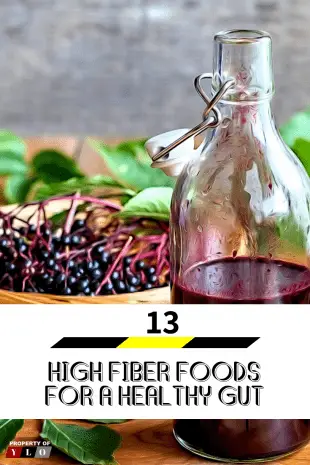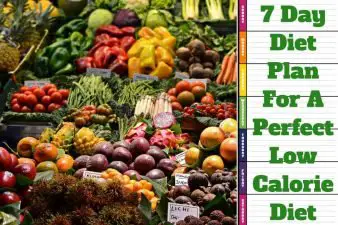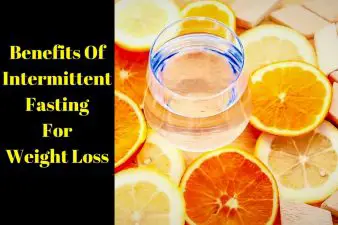A constant challenge in a low carb diet is maintaining a healthy amount of fiber. What you need are Fiber Rich Foods so that you can augment your low-carb diet meal choices. Most of the foods that are on a low carb diet have no fiber at all. So the list of Fiber Rich Foods will help you in creating meals that are highest in both fiber and nutrients.
Should I Consider Fiber As A Carbohydrate?
While the carbs found in fiber do add up they should not be considered as a normal carb in your daily count. Since the carbs found in fiber do not add to your blood glucose you should not count them as part of your daily carb intake number.
Fiber can add to your calorie intake but as a fermentation process in your colon, not as glucose. Fiber Rich Foods actually help with blood glucose levels from unhealthy carbs.
This, in fact, helps further the low carb goals you have set for mitigating these bad carbs. This will, in turn, will help in weight loss and prevent weight gains.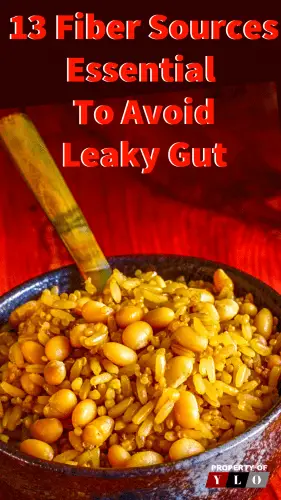
Soluble Fiber and Its Importance
Soluble fibers provide a double benefit not only by helping lower blood sugar levels but also by reducing cholesterol which is another battle in a healthy low carb diet plan. The best sources of this type of fiber are dried beans and oats as well as a few vegetables.
When adding Fiber Rich Foods to a low carb diet you should consider the carb to fiber ratio and always try to maintain a 2 Fiber to 1 Carb ratio or higher.
Since Dieticians recommend 20 to 30 grams of fiber a day, you may be wondering how to work that into your meal plans and still stay under 200 carbs a day. It is a relatively easy number to attain especially if you use the list we provide.
Develop recipes using the Fiber Rich Foods list and you will enjoy the low carb experience more.
The Best Fiber Rich Food and Low-Carb Food List
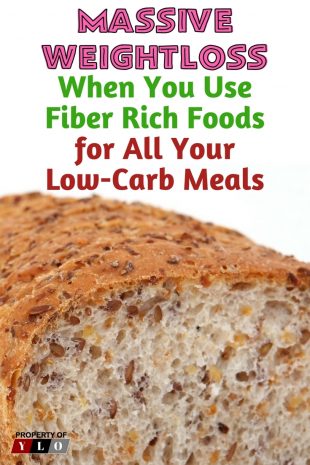
Highest Fiber Sources
Flax Seeds (the ultimate low-card fiber source)
Flax seeds have a lot of omega-3 fatty acids
Flax seeds add a slightly, but not overwhelming, nutty flavor.
Few Ideas for Using Flaxseed in foods:
• Sprinkle raw, ground flax seeds on cereal or granola
• Bake them into cookies and bars
• Eat them as a salad topping.
• Add 1 tablespoon of whole flax seeds to your morning smoothie.
One tablespoon of ground flax has 2.0 grams of carbohydrate, of which 1.9 is fiber.
Flax seeds also can help improve your health while you are losing weight by decreasing blood cholesterol levels and inflammation.
TIP: Grinding or roasting flaxseed breaks its seed coat making all the nutrients easier to digest. (coffee grinder, blender, food processor)
Chia Seeds (Almost all of the carbs in chia seeds is fiber)
Chia seeds have a lot of omega-3 fatty acids
When eaten dry, chia tastes a bit like a poppy seed. It is dense, small and crunchy.
Soaked chia seeds absorb liquid and become very plump, sweet and soft like tapioca pearls.
Unlike other seeds, chia seeds do not have to be ground up to be eaten.
Whole chia seeds can remain good for up to 2 years
Few Ideas for Using Chia Seeds in foods:
• Can be added to yogurt
• Sprinkled on salads (raw, for crunch)
• Chia pudding, similar to rice or tapioca pudding: Chi Pudding Recipe by VeryWell.com
• Blend into smoothies and shakes
• Soups or stews
• Baked Goods
• Stir-fried Entrees
• Omelets
Mustard Greens
Endive
Chicory
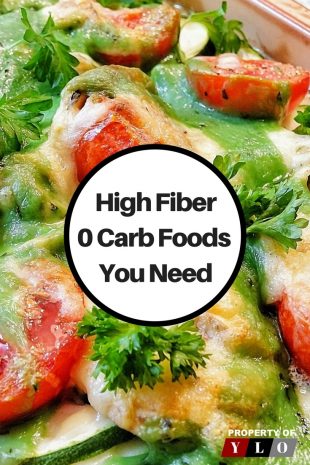
High Fiber to Carb Sources
Raw Wheat Bran: 6 Grams of Fiber to 3 Usable Carbs per 1/2 Cup
Raw Unsweetened Coconut & Coconut Flour: 5 Grams of Fiber to 2 Usable Carbs per Ounce
Collard Greens: 5 Grams of Fiber to 4 Usable Carbs per 1 Cup
Avocado: 12 Grams of Fiber to 3 Usable Carbs per Medium Avocado
Broccoli (cooked): 3 Grams of Fiber per 1 Usable Carbs per 1/2 Cup chopped & cooked
Cauliflower: 2 Grams of Fiber to 1 Usable Carbs per 1/2 Cup
Spinach (frozen): 8 Grams of Fiber to 3 Usable Carbs per 10 oz Package
Blackberries: 8 Grams of Fiber to 6 Usable Carbs per 1 Cup raw blackberries
Equal Amounts Fiber to Carb Sources
Asparagus: Equal Fiber to Carbs
Celery: Equal Fiber to Carbs
Cauliflower (raw): 3 Grams Fiber to 2.5 Carbs
Eggplant (raw): 3 Grams Fiber to 2 Carbs
Lettuce: 1 Gram of Fiber to 1/2 Carbs
Mushrooms: Equal Fiber to Carbs
Spinach and Chard (cooked): 4 Grams of Fiber to 3 Carbs
Radishes: Equal Fiber to Carbs
Red Raspberries: 8 Grams of Fiber to 7 Carbs
The following options usually provide 1 gram of Fiber and 2 Grams of Carbohydrates
Strawberries
Zucchini or Summer Squashes
Bell Peppers
Cabbage, raw or cooked
Rice Bran
Broccoli (raw)
Eggplant (cooked)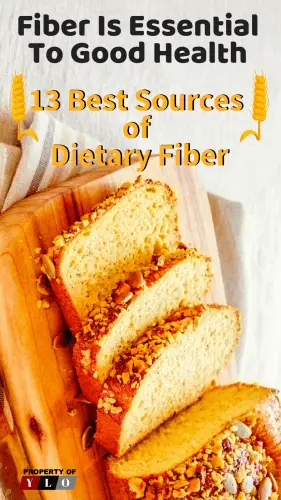
How Much Fiber Is Recommended Per Day?
The Position of the Academy of Nutrition and Dietetics recommends adult women consume 25 grams of total fiber per day and adult men consume 38 grams, with 10 to 15 grams coming from soluble fiber. You need less fiber as you age, so over age 50, women should consume 21 grams and men should consume 30 grams. Most people have a much lower fiber intake than is recommended. Our prehistoric ancestors probably ate upwards of 100 grams of fiber per day, so we probably can handle very high amounts of fiber without difficulty.
So how can I get the amount of fiber I need daily?
The answer is pretty simple just use the Fiber Rich Foods list and “Add Some Crunch”. Whether in a cooked dish or on a salad add Flax-, Chia-, Pumpkin-, or Sesame Seeds and get a 5-gram Fiber boost for every ounce. Blend the seeds until they make a paste and add this as a topping for meats for a unique flavor boost and 5 grams of extra fiber per ounce.
Berries can be added to a diet by creating fruit dishes but an alternative is creating a vinegarette dressing using Raspberries or Blackberries that can be used on Salads, or as a Marinade or to baste on meats. Mince the berries and mix with olive oil, shallots and your source of seasoning to balsamic vinegar.
Create a quick, high-fiber meal by stir-frying broccoli, spinach and sesame seeds, or pecans and artichoke hearts.
All the Fiber Rich Foods combinations provide a high Fiber and Protein count with a low count of carbs. 